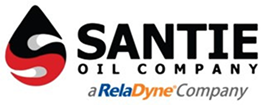A series of standards and requirements surround the military’s dos and don’ts. This includes the oils and lubricants and how they perform for various applications. Outside of the military, other highly technical and intricate industries and applications use these fluids because of their superior compounds. Below, we take a closer look at these standards.
The Intent Behind Mil-Spec
The primary intention for Mil-Spec achieves complete functionality and compatibility across oils and lubricants designed for and by the US Defense Department. The series of specifications are broken down into types with the corresponding language that signifies these parameters and direct operational standards to which type is necessary per the equipment or operation.
The requirements signify the level of resistance to harmful compounds, such as liquid oxygen or hydrocarbon fuels. They play significant roles in military aerospace, aircraft, and other related support equipment. Operators apply the specified lubricants and oils to places of most value or concern:
- Gaskets
- Plug valves
- Fuel system bearings
- Valves
- Aerospace vehicle bearings
It’s essential to note that these defense standards are not explicit to the military and other industries. Highly technical organizations may use or require the use of mil-spec oils. Let’s take a closer look at the sub-categories and their performance standards.
Type I Performance Standards
The initial performance standard, or type one, is designed for applications with a lower temperature and viscosity range. They do not and should not perform or serve high-temperature applications.
Type II Performance Standards
The type two standard has an increased ability to withstand higher temperatures. In addition to increasing temperature compatibility, a standard type two mil-spec oil or lubricant performs remarkably well in thermal and chemical stability measures. The wide range in temperature compatibility goes from -40 to 399 degrees Fahrenheit.
Type III Performance Standards
The type three mil-spec standard is another layer to a formula two variation, with an even higher ability to withstand high heat and superior oxidative strength. Minimal evaporation occurs, and it can withstand temperatures beginning at 392 degrees Fahrenheit.
Type IV Performance Standards
Type four mil-spec must meet a grocery list of requirements to perform at its specified level of function. A few of these requirements include:
- Resistance to high-pressure situations
- Perform over a wide range of temperature gauges
- Minimal changes, regardless of working penetrations
- Stability in oxygenation
- Minimal fuel solubility
Santie Oil
At Santie Oil Company, we value and uphold each standard for mil-spec oils and lubricants. We are an industry-leading Castrol lubricant distributor with a wide variety of fluids suitable for all high-tech applications. Connect with us today to receive your custom quote!

